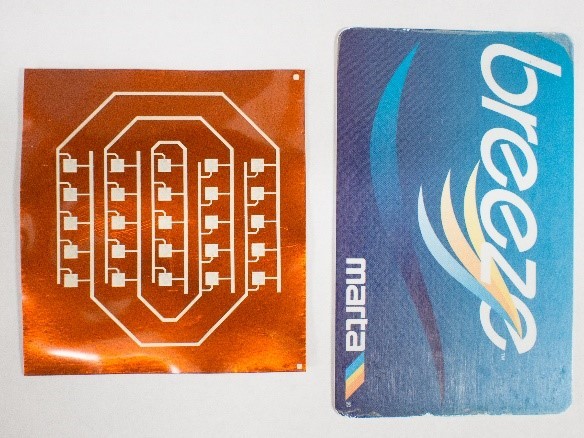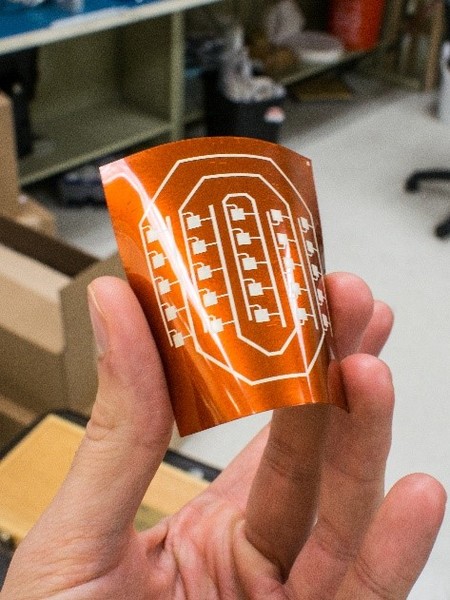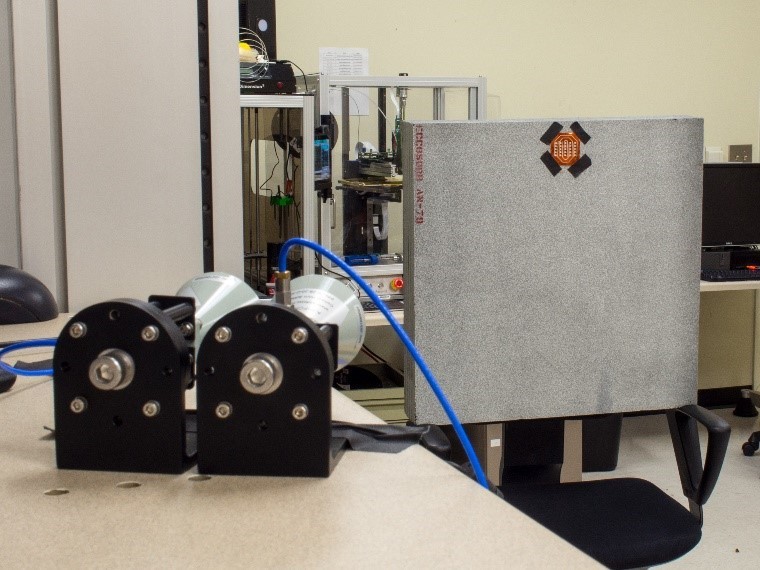Georgia Tech inventors have developed a device and interrogation method for extended range wireless sensing. The device is an inkjet printed reflect-array with Van-Atta operation. The device consists of rectangular patch antennas, which are connected for in-phase reemission in the direction of the impinging interrogation signal. Because of this, the tag can be read at long range from any direction. Unlike standard Van-Atta reflect-arrays, this device involves two degenerate modes of the square patch antenna to reemit the wave with “P” polarization. This provides improvement in isolation between the signals reflected by the array from the interference due to reflections of the environmental clutter. This device takes advantage of the humidity dependence of the permittivity of this substrate in order to enable it with humidity sensing capabilities. Because of its design, the working frequency of the array is fully determined by the permittivity of the substrate. Its resonance frequency is then determined by interrogating with a frequency sweep to find the frequency that maximizes the radar cross section of the array, therefore determining the working frequency of the device. This frequency is then used to determine the permittivity of the substrate and, finally, the ambient humidity level.
- Low cost
- Fully inkjet-printed
- Flexible
- Chip-less (unlike RFID tags) and component-less
- High frequency operation capable
- Changes polarization of reflected signal
- Fully scale-able for different frequency operation or radar cross section increase
- Capable of being interrogated from a large range of angles
- Low cost sticker that can be interrogated with a radar system at ranges under and beyond 30m
- To track the humidity level in different locations of a large room
- Potential use in agricultural applications
- Long range readable fully-printed wireless barcodes for industries such as warehousing
Concepts such as the Internet of Things and 'Smart Skins' promise to connect objects to form a global information and sensing-enabled devices network. In order to implement this idea, low cost and environmentally friendly technologies are needed, with fully-printable and chip-less sensing devices offering appeal. Current devices for gas, temperature, or humidity sensing rely on UHF frequency based sensors or time-encoded UWB chip-less structures. However, both technologies are hindered by the use of low gain, large beam width antennas, resulting in a low range.



